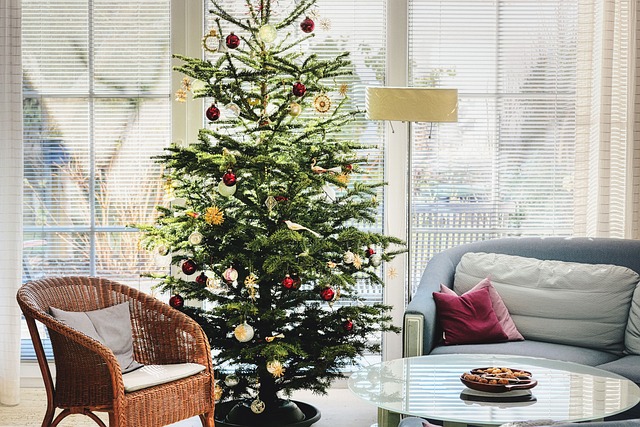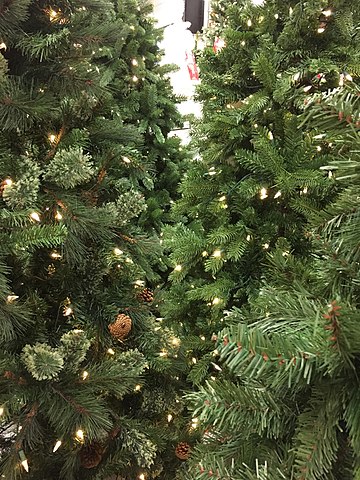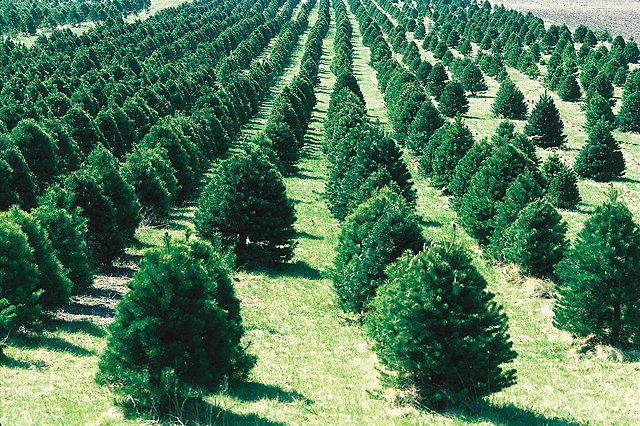 Tis the holiday season, as people decorate their homes and buy presents for their loved ones.
Tis the holiday season, as people decorate their homes and buy presents for their loved ones.
Besides Santa and cheesy music, the star of the season is none other than the beloved Christmas tree. But before the gifts, tinsels, and ornaments are brought out, you might be puzzled over whether to choose a real or artificial tree.
As we become more conscious of our impact on the environment, our first pick might be an artificial tree. After all, chopping down a real tree for seasonal decoration seems wrong, doesn’t it?
The answer might surprise you! Let’s explore the environmental impacts of real and artificial Christmas trees.
Pine or Plastic?
 You might think that keeping a plastic tree is more sustainable if you reuse it every year.
You might think that keeping a plastic tree is more sustainable if you reuse it every year.
This isn’t wrong -- and is similar to what you might know about the difference between disposable and reusable bags. A reusable bag is only sustainable if it is used frequently and consistently, offsetting the costs of its production. The life of an artificial tree may be extended through donation or recycling, and can still be sustainable if used for over 20 years. At the same time, artificial trees are convenient. They don’t shed needles and they can be as small or as tall as you prefer.
However, their carbon cost still outweighs that of a real tree. Artificial trees are made of polyvinyl chloride plastic or PVC. This plastic is manufactured from petroleum at petrochemical factories that pollute the atmosphere. Most of these factories are based in countries such as China and are imported to the US. Carbon emissions from transport alone are huge, but the costs become even higher when unwanted trees are dumped in landfills.
For these reasons, it is better to purchase a real tree, but there are a few precautions you need to take before doing so is truly sustainable.
A More Sustainable Christmas
 Growing Christmas trees provide benefits to the environment. They grow on rolling hills that are often unsuitable for other crops and create new ecosystems while capturing carbon. When trees are harvested, they are immediately replaced with 3-5 newly planted saplings.
Growing Christmas trees provide benefits to the environment. They grow on rolling hills that are often unsuitable for other crops and create new ecosystems while capturing carbon. When trees are harvested, they are immediately replaced with 3-5 newly planted saplings.
However, over recent years, Christmas has become increasingly commercialized. The annual craze to buy gifts and decorations translates into piles of stuff we don’t need and end up throwing away. Accordingly, the overwhelming demand for real Christmas trees has presented its own problems. Mass plantations use enormous amounts of fertilizers, pesticides, herbicides, and fungicides. This drastically impacts the surrounding environment, especially when Christmas trees are grown as non-native species.
If you buy a real Christmas tree, you can make it count by choosing to purchase it from responsible companies. Forests can be renewable resources if they’re well-managed and protected. If you buy Christmas trees and other wood products from managed forests, your purchase goes towards protecting forests and supporting conservation causes. And if you buy locally, you can limit the carbon footprint that comes from transporting the tree to your house.
Enjoy your tree’s fresh pine smell over the season, and when you’re ready to dispose of it, do so responsibly. Real Christmas trees have an average carbon footprint of 3.5 kg, but that number rises to 16 kg if they are thrown in landfills. Many companies now offer collection options, so that real trees can be picked up from your house and converted into mulch and compost.
Alternatively, you can still be festive by decorating a living tree outside or buying a live potted tree. Whatever your choice, let’s remember that being sustainable goes far beyond your choice of tree. This season, try to consider how your lifestyle choices have wider impacts on the environment.
Sources: Guardian, NYTimes, Washington Post, Earth.org, Nature.org







